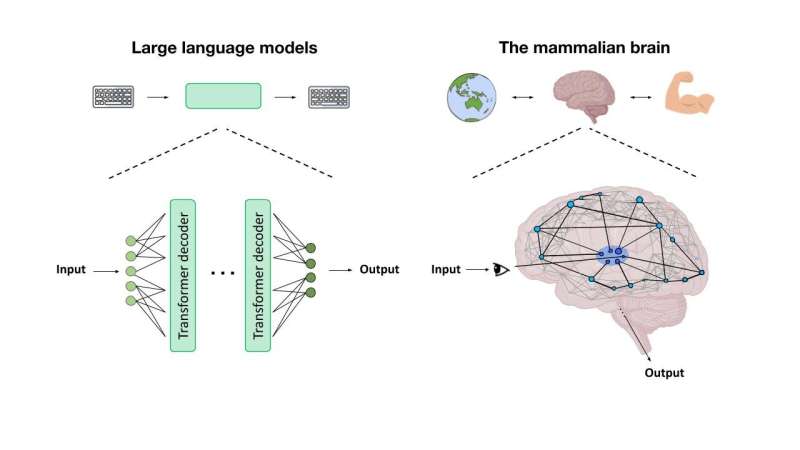This article has been reviewed according to Science X's editorial process and policies. Editors have highlighted the following attributes while ensuring the content's credibility:
fact-checked
peer-reviewed publication
proofread
Applying a neuroscientific lens to the feasibility of artificial consciousness

The rise in capabilities of artificial intelligence (AI) systems has led to the view that these systems might soon be conscious. However, we might be underestimating the neurobiological mechanisms underlying human consciousness.
Modern AI systems are capable of many amazing behaviors. For instance, when one uses systems like ChatGPT, the responses are (sometimes) quite human-like and intelligent. When we, humans, are interacting with ChatGPT, we consciously perceive the text the language model generates, just as you are currently consciously perceiving this text here.
The question is whether the language model also perceives our text when we prompt it. Or is it just a zombie, working based on clever pattern-matching algorithms? Based on the text it generates, it is easy to be swayed that the system might be conscious.
New research published in the journal Trends in Neurosciences, Jaan Aru, Matthew Larkum and Mac Shine take a neuroscientific angle to answer this question.
The three neuroscientists argue that although the responses of systems like ChatGPT seem conscious, they are most likely not. First, the inputs to language models lack the embodied, embedded information content characteristic of our sensory contact with the world around us. Secondly, the architectures of present-day AI algorithms are missing key features of the thalamocortical system that have been linked to conscious awareness in mammals.
Finally, the evolutionary and developmental trajectories that led to the emergence of living conscious organisms arguably have no parallels in artificial systems as envisioned today. The existence of living organisms depends on their actions and their survival is intricately linked to multi-level cellular, inter-cellular, and organismal processes culminating in agency and consciousness.
Thus, while it is tempting to assume that ChatGPT and similar systems might be conscious, this would severely underestimate the complexity of the neural mechanisms that generate consciousness in our brains. Researchers do not have a consensus on how consciousness rises in our brains. What we know, and what this new paper points out, is that the mechanisms are likely way more complex than the mechanisms underlying current language models.
For instance, as pointed out in this work, real neurons are not akin to neurons in artificial neural networks. Biological neurons are real physical entities, which can grow and change shape, whereas neurons in large language models are just meaningless pieces of code. We still have a long way to go before we understand consciousness and, hence, a long way to conscious machines.
More information: Jaan Aru et al, The feasibility of artificial consciousness through the lens of neuroscience, Trends in Neurosciences (2023). DOI: 10.1016/j.tins.2023.09.009
















